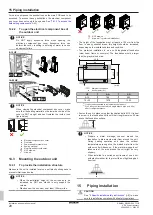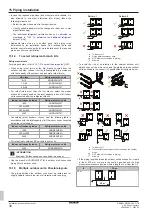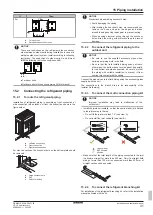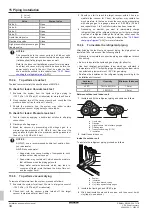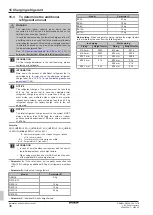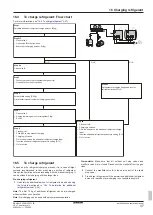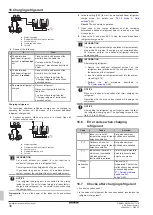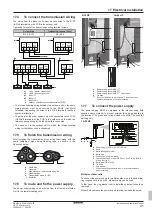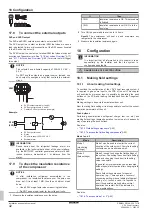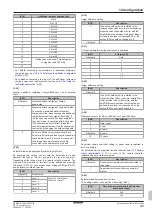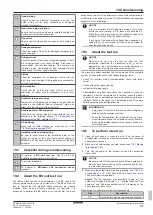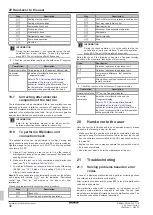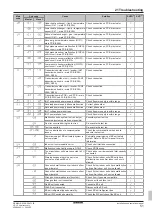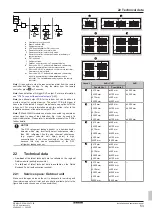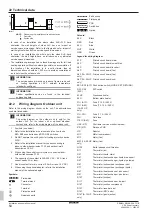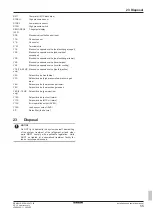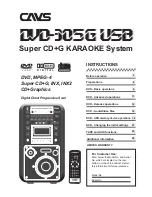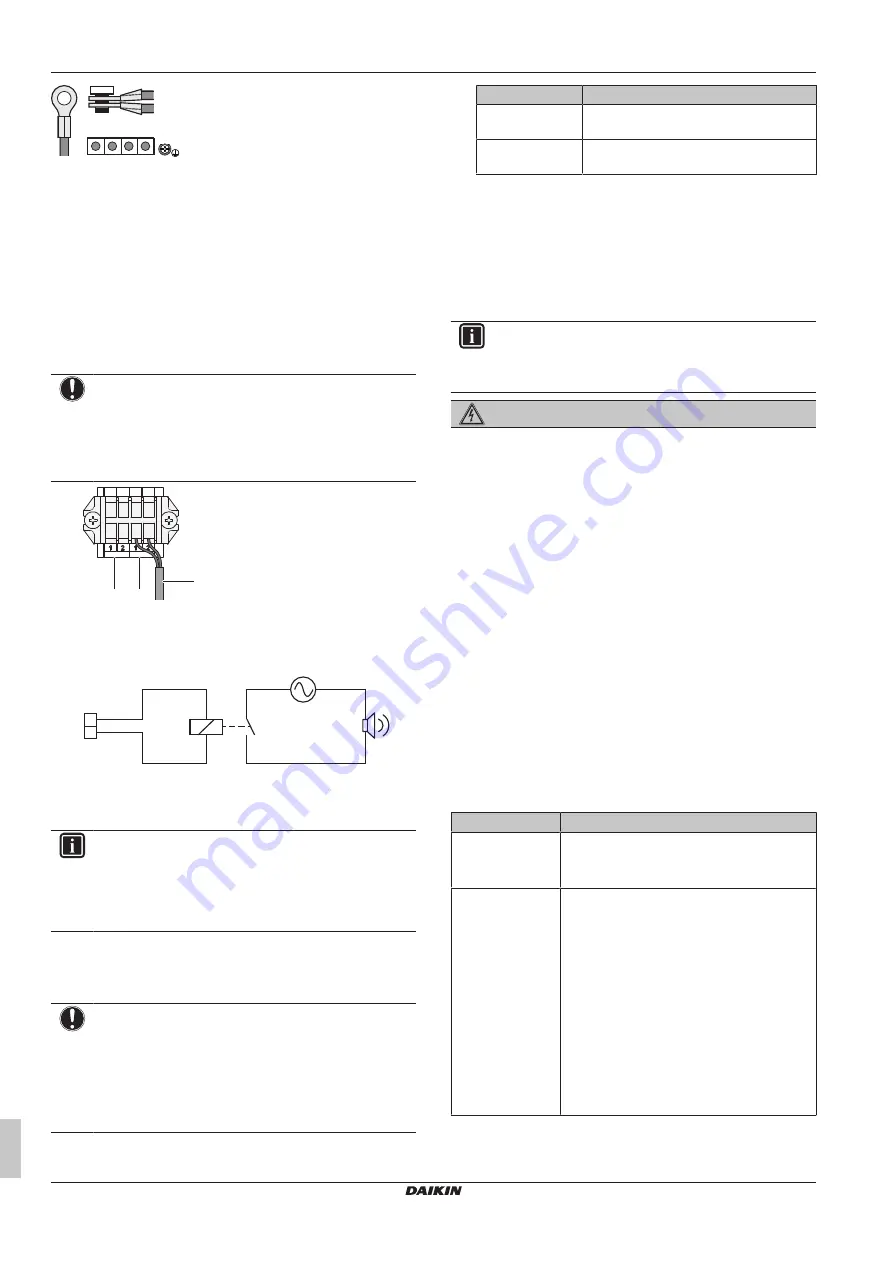
18 Configuration
Installation and operation manual
42
REMA5+REYA8~20A7Y1B
VRV 5 heat recovery
4P684060-1 – 2022.02
L1 L2 L3 N
17.8
To connect the external outputs
SVS and SVEO output
The SVS and SVEO outputs are contacts on terminal X2M.
The SVS output is a contact on terminal X2M that closes in case a
leak is detected, failure or disconnection of the R32 sensor (located
in the BS unit or indoor unit).
The SVEO output is a contact on terminal X2M that closes in case of
occurrence of general errors. See
and
"21.1.1 Error codes: Overview"
49] for errors that will trigger
this output.
NOTICE
The outputs have a limited capacity of 220~240 V AC –
0.5 A.
Do NOT use the outputs as a power source. Instead, use
each output to energize a relay that controls the external
circuit.
WHT
SVEO
SVS
BLK GRY PPL
b
a
c
X2M
a
SVEO output terminals (1 and 2)
b
SVS output terminals (1 and 2)
c
Cable to SVS output device (example)
Example:
X2M
(SVS)
a
1
2
c
b
d
a
SVS output terminal
b
Relay
c
AC power supply 220~240 V AC
d
External alarm
INFORMATION
Sound data about the refrigerant leakage alarm are
available in the technical data sheet of the user interface.
E.g. the BRC1H52* controller generates an alarm of 65 dB
(sound pressure, measured at 1 m distance from the
alarm).
17.9
To check the insulation resistance
of the compressor
NOTICE
If, after installation, refrigerant accumulates in the
compressor, the insulation resistance over the poles can
drop, but if it is at least 1 MΩ, then the unit will not break
down.
▪ Use a 500 V mega-tester when measuring insulation.
▪ Do NOT use a mega-tester for low voltage circuits.
1
Measure the insulation resistance over the poles.
If
Then
≥1 MΩ
Insulation resistance is OK. This procedure
is finished.
<1 MΩ
Insulation resistance is not OK. Go to the
next step.
2
Turn ON the power and leave it on for 6 hours.
Result:
The compressor will heat up and evaporate any
refrigerant in the compressor.
3
Measure the insulation resistance again.
18
Configuration
INFORMATION
It is important that all information in this chapter is read
sequentially by the installer and that the system is
configured as applicable.
DANGER: RISK OF ELECTROCUTION
18.1
Making field settings
18.1.1
About making field settings
To continue the configuration of the VRV 5 heat recovery system, it
is required to give some input to the PCB of the unit. This chapter
will describe how manual input is possible by operating the push
buttons on the PCB and reading the feedback from the 7‑segment
displays.
Making settings is done via the master outdoor unit.
Next to making field settings it is also possible to confirm the current
operation parameters of the unit.
Push buttons
Performing special actions (refrigerant charge, test run, etc.) and
making field settings (demand operation, low noise, etc.) happens by
way of operating the push buttons.
See also:
▪
"18.1.2 Field setting components"
▪
"18.1.3 To access the field setting components"
Mode 1 and 2
Mode
Description
Mode 1
(monitoring
settings)
Mode 1 can be used to monitor the current
situation of the outdoor unit. Some field setting
contents can be monitored as well.
Mode 2
(field settings)
Mode 2 is used to change the field settings of
the system. Consulting the current field setting
value and changing the current field setting
value is possible.
In general, normal operation can be resumed
without special intervention after changing field
settings.
Some field settings are used for special
operation (e.g., 1 time operation, recovery/
vacuuming setting, manual adding refrigerant
setting, etc.). In such a case, it is required to
abort the special operation before normal
operation can restart. It will be indicated in
below explanations.
See also:
▪

